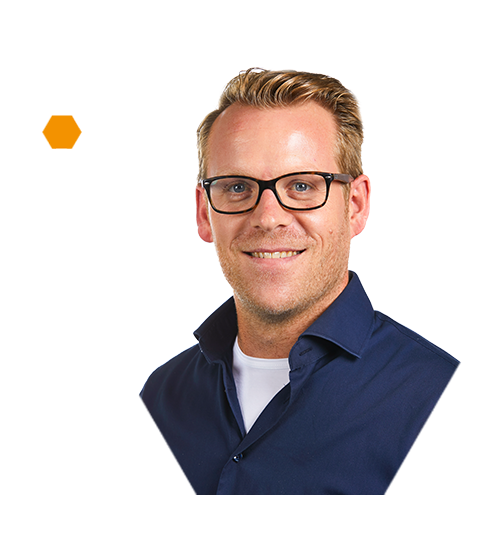Our surface treatments uncovered
Bart Groothuis - Surface Treatment Engineer

When we talk about all the different components we make, it’s easy for us to point out how they work and what they do on a mechanical level. However, what is often overlooked are the chemical processes that take place behind them. Our high-tech achievements would not be possible without us also having a deep understanding of chemistry.
The nature of the aerospace industry means that everything we develop must withstand the most extreme conditions, whether it’s extremes in for instance temperature and pressure. Chemistry is a key factor when it comes to airworthiness, and that is why you will find specific surface treatment processes in every area of our work. Bart Groothuis is the engineer who oversees all of them within Aeronamic.
A deeper understanding
Bart Groothuis: “You need to look at a chemical process as if it’s a living organism; it takes a great deal of expertise to manage and control it. When it comes to protecting components, we have various inhouse techniques: anodizing, phosphating and etching, to name just three. And we have chemical processing lines for surface treatments, as well as for special cleaning purposes. Having all these possibilities available inhouse is highly beneficial for Aeronamic’s lead times. For example, we don’t need to send out our magnesium components for anodizing and wait for them to return. We can do this inhouse, which shortens the lead time by three months.”

Before we start
“There is a whole table of requirements and preferences that come into play with regard to surface treatments. We follow the NADCAP global audit system as a rule, but we’re also keenly aware of the differences between US and European legislation. In addition, our customers may have specific requirements of their own. This can impact the decisions we have to make on, for example, packaging or the use of cleaning agents. Within these requirements, we do everything necessary. Our job begins the moment we see the design plan of a component or system. We clarify how strictly we have to follow the customers’ ideas or whether there is room for suggestions or additional insights, based on our expertise in chemistry. If the latter is the case, we will explain and demonstrate the means that may be available and the constraints they may encounter. Our proposals will always be focused on simplifying processes for our customers and lowering the potential risks. In the end, the customers will decide for themselves what works best for them.”
Chemical arena
“To push ourselves, we teamed up with university students and began creating simulations of future chemical processes. Our main starting point was to determine where we would be in two years. First, we made fully detailed projections based on our expectations, rechecking which components would be necessary, as well as lead times, working lines, number of cranes, and reorganization of machines and people. The blueprint for the future chemical arena is ready and proven by digital simulations. We reassessed all our chemical processes and now know which ones work the most effectively. Within the chemical arena readouts from sensors and controls will be used to automatically adjust the process. This ensures optimization of the use of chemicals, water consumption, waste-water management et cetera. This scores major points when it comes to sustainability. However, bear in mind that no matter how extensive these simulations are, we are always aware of the value of involving our operators in the process. Their sharp eyes can truly monitor “the living organism” which is chemistry, so keeping our team fully trained and up to date is another ongoing process. As a matter of fact, we are searching for new people who are looking to enter this field of expertise. And, together with them, I can’t wait to share my knowledge and discover new and better approaches!”
Which of our chemical processes catches your attention? And which ones do you want to look at in closer detail?